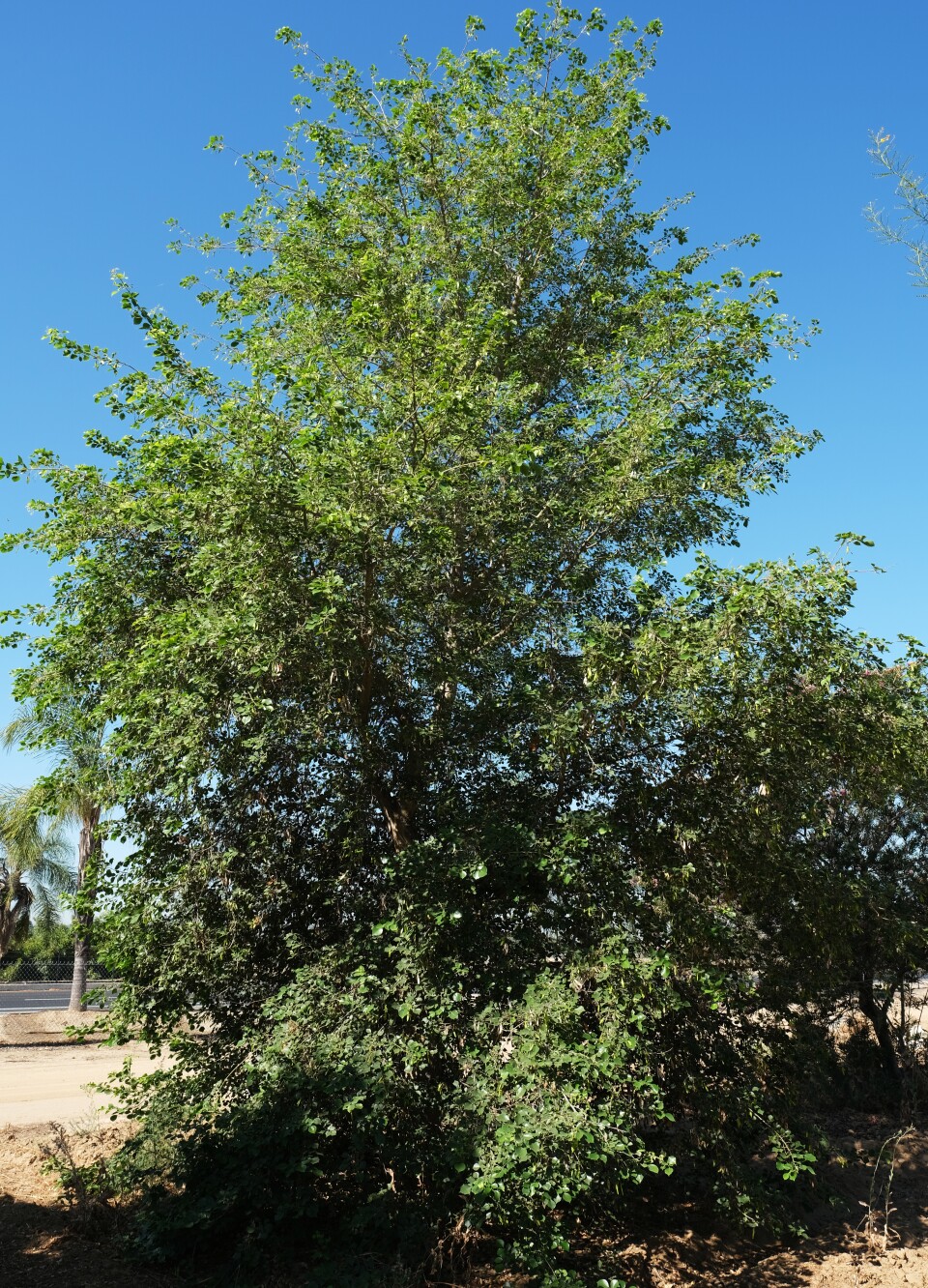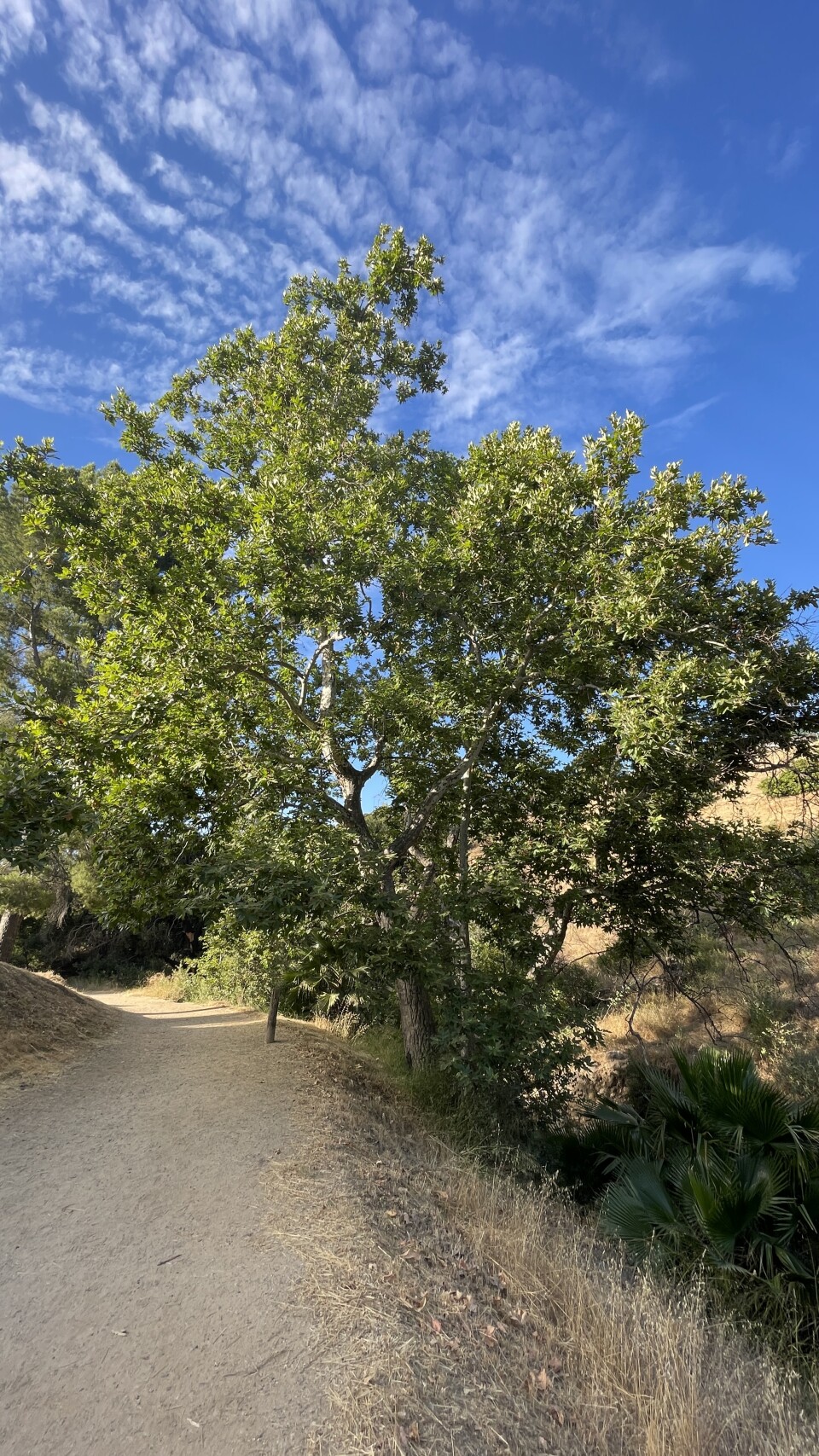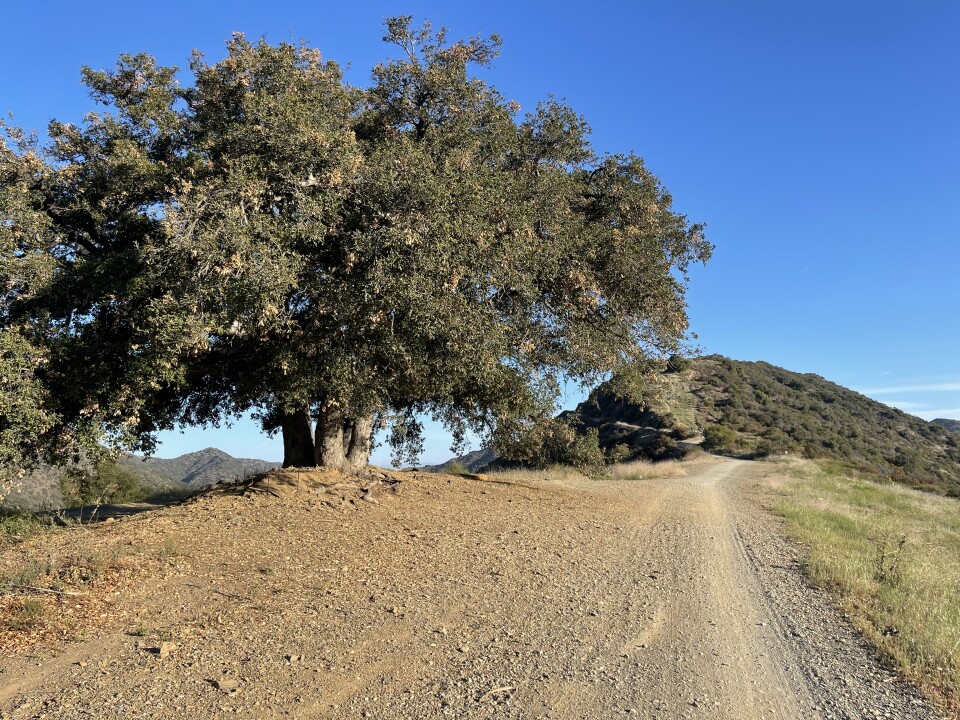Truth matters. Community matters. Your support makes both possible. LAist is one of the few places where news remains independent and free from political and corporate influence. Stand up for truth and for LAist. Make your year-end tax-deductible gift now.
Your Guide To Making SoCal A Little Bit Cooler: How To Plant Trees That Can Thrive

Climate change is an existential threat to urban forests across Southern California, with many trees — long reliant on supplemental water — expected to suffer and possibly die as things heat up and dry out.
This is a big problem, because the less tree coverage we have, the more our health and safety are jeopardized.

Why trees matter so much
Not only do trees mitigate CO2 in the atmosphere and promote biodiversity, but they help lower temperatures in neighborhoods by as much as 20-45 degrees, according to the Environmental Protection Agency.
Given that climate projections say some of our neighborhoods could suffer dozens of additional days over 95 degrees by 2100, we need to start planting now.
But what trees are able to handle extreme heat and drought?
I pulled together a list of candidates from Tree People and a long-term study being done by the U.S. Department of Agriculture. If you want to see them for yourself, I've got resources at the bottom of this article.
What to know before planting
This is a general guide geared towards trees that should do well on little water and in hot conditions.
Southern California’s climate varies widely from the oceans to the desert, so a tree that does well in relatively temperate Santa Monica might not do well in Woodland Hills, where it’s brutally hot and dry several months out of the year.

As always, if you’re going to stick something in the ground with the expectation that it’ll be there for 20-40 years, do a bit of research to assess if the tree you pick is a good fit for you.
These trees will all need supplemental water the first few years to get established, and will likely need occasional deep watering depending on the length and severity of the drought. Gray water is a great option to explore for that.
Other things to think about:
- Is there irrigation at your planting spot? If not, where will the first 2-3 years of supplemental water come from needed to help the tree get established?
- Are power lines overhead? If so, you may want to plant something that won't interfere with them.
- If you plan on planting near your home, make sure the tree's roots aren't invasive.

Final caveat: The trees being tested by the USDA, which I describe in detail in this piece, are still expected to be evaluated for another decade or so. That said, the ones I wrote about below are doing pretty well seven years in. The trees pictured below should also grow much bigger than what you see in the photos. They would also probably benefit from some pruning.
Species to consider
1. Desert Willow

Beautiful pink flowers are a highlight of this fast-growing tree native to the southwestern U.S. which thrives in hot and dry conditions. I've seen it thriving in the San Fernando Valley, and it seems to be one of the better performing trees at the UC Riverside Climate Ready Tree plot. It can reach up to 30 feet tall and provides food for a whole bunch of native species, including hummingbirds and butterflies. If you’re looking for something a bit less shrubby with more upright growth, the Tree People recommend the Bubba variety.
2. ‘Red Push’ Pistache

This tree had one of the thickest canopies out of all the trees at the UC Riverside site. Here from Arizona, the red push pistache turns bright red in the fall for those Southern Californians missing classic autumn colors. It can grow up to 25 feet tall.
3. Maverick Mesquite

A thornless version of the honey mesquite whose native home is here in the southwest. It has showy yellow flowers that were absolutely covered in bees when I saw them. It can reach 35 feet tall and does well in extreme temperatures and poor soil. Plant it and hate it? Cut it down and use its wonderful wood in your BBQ. It can be considered invasive in some environments.
4. California Black Walnut

You're going to need a lot of room if you're going to plant this Tree People recommendation. An absolute unit, these trees can reach up to 75 feet wide and tall and make a great nesting spot for birds. They release a chemical called jugalone that can prevent other plants from growing around them. Once established they do well in drought conditions, though they’ll benefit from some supplemental water. The tree in the above photo is at Rancho Camulos in Piru and is reportedly several hundred years old.
5. Tecate Cypress

A Christmas tree for those of us where Christmas means wildfires and heat waves. It's from the southwest, and could be trimmed into a hedge.
6. Desert Museum Palo Verde

A hybrid tree from Arizona that’s become a classic drought-tolerant landscaping tree here in Southern California. It’s fast growing with green bark and leaves. Tons of yellow flowers bloom as summer approaches. Looked OK at the UC Riverside plot, but will reportedly do better with minimal irrigation and pruning, which this tree has not received. It can reach 30 feet high.
7. Rosewood

Another standout tree at the UC Riverside plot with a beautiful canopy providing great shade. It’s from India and can reach 50 feet tall.
8. Western Sycamore

These gorgeous native trees grow large and are often found along streams, tucked in canyons. They're often used as landscaping trees and become more drought tolerant once established only requiring water once a month or so. It can provide homes to owls and woodpeckers, but its roots can be a bit invasive, so make sure it's not close to any structures or driveways. This was a Tree People recommendation.
9. Ghost gum

A type of eucalyptus that can grow to more than 60 feet tall and puts out white flowers in the summer. More drought tolerant once established. Seemed to be doing well at UC Riverside. Don't plant in any area that might burn because their high oil content makes them prone to combusting into hellish spires.
10. Any native oak

Yes, our most recent drought years took a toll on our native oaks, but once established they tend to be quite drought tolerant. Occasional deep waterings will help keep them healthy. There are several different varieties, so check out Calscape to see which one will work for your area. They can get huge!








